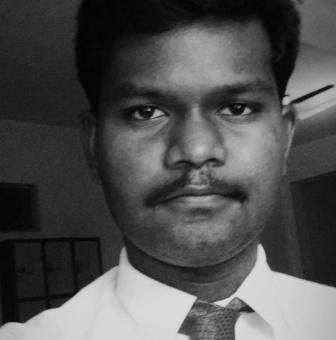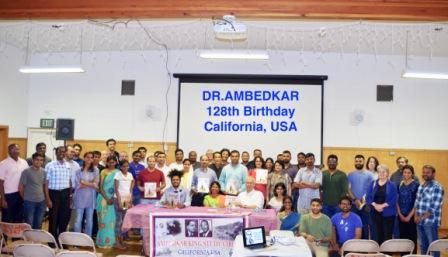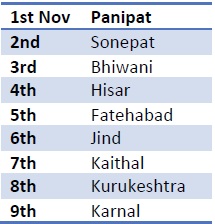Dr. SPVA Sairam

Speaking about the oppressed communities and the state of Hindu Civilization, Dr. Ambedkar in his book The Untouchables (1948) remarked:
“Besides the Shudras, the Hindu Civilization has produced three social classes whose existence has not received the attention it deserves. The three classes are :- (i) The Criminal Tribes who number about 20 million or so;(ii) The Aboriginal Tribes who number about 15 millions; and (iii) The Untouchables who number about 50 million.
The existence of these classes is an abomination. The Hindu Civilization, gauged in the light of these social products, could hardly be called a civilization. It is a diabolical contrivance to suppress and enslave humanity. Its proper name would be infamy. What else can be said of a civilization which has produced a mass of people who are taught to accept crime as an approved means of earning their livelihood, another mass of people who are left to live in full bloom of their primitive barbarism in the midst of civilization and a third mass of people who are treated as an entity beyond human intercourse and whose mere touch is enough to cause pollution?”(1)
Just a year before this book was published, Dr. Ambedkar was appointed as the chairman of the Drafting Committee (2). More than 70 years have passed since the enactment of the Constitution, but the plight of aforementioned social classes has hardly changed.
The movie Jai Bhim deals with one such oppressed community called ‘Irular’- a nomadic community-and how the members of this community are arrested in fake cases by crushing their hopes for a better and dignified life. It is chiefly based on the life of Justice Chandru who worked with them in real life.

Why must this movie be appreciated?
Firstly, the Director tried to depict the cultural life of the Irular tribe, their daily activities and the emotional bond present among them beautifully. There are some remarkable scenes in the movie, for instance, after catching the snake at the President’s home of Radhapuram village, Rajanna (‘Rajakannu’ in the original Tamil, one of the prominent characters in the movie) leaves the snake in the forest without killing it. There is another scene where Sinathalli (Sengani in the original, another prominent character) refrains from killing a baby rat and says “Should we ease our hunger with that little thing?”These scenes echo the spirit of the Buddha when he differentiated between the ‘Need to kill and Will to kill’ (3).
Seldom do we find Indian movies centered on the lives of the marginalized. Given the hopeless state of the public conscience of caste society(4), when someone makes a movie on marginalized communities, it must be welcomed – of course by viewing it through a critical lens – as cinema is a potential source to promote consciousness.
Secondly, unlike the popular police movies which project brutality as heroism and elevate police as demigods, this movie highlights the horrific nature of police brutality and how people from marginalized sections- Irular tribe in this movie- are subjected to inhuman treatment and sexual violence by arresting them in fake cases.
Thirdly, this movie deals about Justice Chandru – a real life lawyer who fought for the poor. As pointed by Vinay (5), the movie reminds us of people like Bojja Tharakam, who had dedicated their lives to the cause of justice. There are many social activists who are working tirelessly to implement the provisions of the Constitution and in one sense it is a tribute to such people who work selflessly. One wishes that this movie will set a trend to bring stories of many such people on to the screen and compel the government for effective interventions (6).
Issues with the movie
A) Ignoring the real questions:
The movie doesn’t discuss why tribal communities like the Irular are living in such a pathetic state – worst living conditions, abysmal levels of education, lack of access to basic health care, absence of basic documents to enroll themselves to vote or get rations etc- even after these many years of independence. There is no discussion about the Savarna castes (caste society) and how they are responsible for this deplorable state of tribal people in India (7) or scenes dealing with the constitutional safeguards and legal provisions related to the tribal people.
The most important question is, when it comes to the delivery of justice what is the caste composition of the judges? As noted by the poet and human rights advocate Bojja Tharakam (8):
“The malady with which Supreme Court is afflicted is not the lack of Independence, but its isolation from social realities. Like any other branch in the Indian Administration or any field of activity in the Indian society, the Supreme Court is not immune to caste prejudices. The very composition of the Supreme Court reveals not only the monopoly of a few limited higher castes, but also the hostility towards Backward classes, more particularly Scheduled Castes and Tribes”
This hostility and caste bias is reflected in many of the judgments; in the words of lawyer Disha Wadekar (9):“Judicial stereotyping of women victims and survivors of violence, which consistently frames a “self-respecting woman,””chaste Indian woman,” “honorable and virtuous woman” as a believable, credible victim, has led to the construction of an “ideal victim” who is deserving of justice…
In constructing such ideal victimhood standards, while referring to “Indian values,” the courts are basically borrowing from Manu’s Brahminical law pertaining to ideal womanhood… In the Tukaram vs State of Maharashtra case, where a 16-year-old Adivasi girl, Mathura, was gang-raped by policemen in custody, the apex court acquitted the accused policemen on the grounds that she was promiscuous and habituated to sex, did not raise an alarm for help, and there was absence of injuries and signs of struggle. Mathura’s behaviour before and after the incident, and her tribal location, did not fit the ideal victim conduct in the eyes of the court. Similarly, in the Bhanwari Devi case, the sessions court acquitted the men on the grounds that upper-caste men cannot rape a lower-caste woman…How can our justice system safeguard the personhood guaranteed by the Constitution, when it appears to be borrowing from Brahminical patriarchal framework to assess the credibility of survivors?”
In the movie, Director Gnanavel should have highlighted how resolving aforementioned issues can help in the implementation of the significant provisions of the Constitution – the hope of masses.
B) Depiction of the inhuman treatment of the members of the Irular tribe:
Firstly, we can’t deny the fact that this is how people from the marginalized sections are treated inside or outside of the police station. Institutions are nothing but the extensions of society as Babasaheb said; hence what is practiced in society is naturally reflected in the institutions as well.
While all this may be true, one wonders why so much horror needs to be depicted in the movie to prick the conscience of the audience. The director could have cut the length of the torture scenes and extended the scenes dealing with the cultural life of the Irular tribe.
There is a trend nowadays in movies (and real life as well) to create an image that if there is any issue devoid of violence, it is not worthy of serious concern. So the question of caste becomes an issue only if an ex-untouchable is beaten to death with blood everywhere on his body, whereas issues like representation of untouchables in every walk of life assumes zero seriousness as there is no direct action of violence involved. There are millions of backward classes living in India without any share in landholdings, public employment etc but no one bothers about them. As Babasaheb remarked, the Nazi social order may be more violent (open horrors) than the Hindu social order but the means adopted by the latter to keep masses under slavery for generations to come in a non-violent way is more dangerous and treacherous than the violent measures adopted by Nazis or anyone else.
To quote Babasaheb:
“To deny freedom of opportunity, to deny freedom to acquire knowledge, to deny the right of arms is a most cruel wrong. It… mutilates and emasculates man. The Hindu social order is not ashamed to do this. It has, however, achieved two things. It has found the most effective, even though it is the most shameless method of preserving the established order. Secondly, not withstanding the use of the most inhuman means of killing manliness, it has given to the Hindus the reputation of being very humane people. The Nazis had indeed a great deal to learn from the Hindus. If they had adopted the technique of suppressing the masses devised by the Hindus they would have been able to crush the Jews without open cruelty and would have also exhibited themselves as humane masters” (10)
C) Title:
After looking at the title, one naturally expects some scenes depicting a protest near Babasaheb’s statue or some dialogues quoting his words in the proceedings of the courtroom etc. Not just dialogues, even the portraits of Babasaheb don’t find much place in the movie which is titled after the slogan associated with him. It is like making a movie on the Theory of Gravitation without Isaac Newton. Probably, the filmmaker thought that the title “Jai Bhim” would be advantageous as many attach profound emotional value to the slogan.
Conclusion
Though movies like Jai Bhim must be appreciated for portraying the lives and social issues of marginalized, filmmakers must make earnest efforts to give a holistic picture of the issue or theme they are dealing with. On a positive note, one wishes that movies like Jai Bhim will encourage many film makers to make movies affecting the lives of masses in a genuine manner and initiate a serious discussion and promote SOCIAL CONSCIENCE – the only safeguard of all rights fundamental or non-fundamental (11)
~
References
1. Page 239,Volume 7 of Babasaheb Ambedkar Writings and Speeches (BAWS)
2. Dr.Ambedkar felt that the safeguards provided in the constitution for the oppressed communities are inadequate, this was expressed in his resignation letter to cabinet as well – check from page 1317, Volume 14(2), BAWS
3. Page 346, Volume 11(Buddha and his Dhamma), BAWS
Also check: Telugu Poet Gorati Venkanna remarks: “Untouchables don’t kill the living cow; they only consume the meat of dead cow” (https://www.youtube.com/watch?v=bd3eblu5c7M&feature=youtu.be)
4. Dr.Ambedkar says: “India is a peculiar country and her nationalists and patriots are a peculiar people. A patriot and a nationalist in India is one who sees with open eyes his fellowmen treated as being less than men. But his humanity does not rise in protest He knows that men and women for no cause are denied their human rights. But it does not prick his civic sense to helpful action. He finds whole class of people shut out from public employment. But it does not rouse his sense of justice and fair play. Hundreds of evil practices that injure man and society are perceived by him. But they do not sicken him with disgust. The patriot’s one cry is power and more power for him and for his class. I am glad I do not belong to that class of patriots” (Pages 598-599, Volume 2 BAWS)
5. Also check other Facebook posts of Vinay related to the movie -https://m.facebook.com/story.php?story_fbid=10158784679509472&id=754524471
6. Tamil Nadu Chief Minister M.K.Stalin has recently distributed Pattas, Community certificates and important government subsidies to numerable irular and Kuravar families https://www.instagram.com/p/CV2wr4Hpu6N/- The Tamil Nadu government has started recruiting anthropologists in overcoming delay in ST identification and certificate issuance – https://m.facebook.com/story.php?story_fbid=4764512183568030&id=100000278850497.
7. Check Page3, Volume 5, BAWS
8. In Quest of Equality: Indian Constitution since Independence by Bojja Tharakam, Page 112.
Also check: https://roundtableindia.co.in/index.php?option=com_content&view=article&id=9985:constitutional-strategies-for-bahujan-representation-in-the-higher judiciary&catid=119:feature&Itemid=132
9. https://www.epw.in/journal/2021/23/comment/rejecting-ideal-victimhood.html,
Few more instances of Caste bias 1)https://www.thehindu.com/news/national/scst-atrocities-act-has-become-a-means-to-blackmail-citizens-public-servants-sc/article23303970.ece
10. Pages 126-127, Volume 3, BAWS
11. “The idea of making a gift of fundamental rights to every individual is no doubt very laudable. The question is how to make them effective? The prevalent view is that once rights are enacted in a law then they are safeguarded. This again is an unwarranted assumption. As experience proves, rights are protected not by law but by the social and moral conscience of society. If social conscience is such that it is prepared to recognize the rights which law chooses to enact, rights will be safe and secure. But if the fundamental rights are opposed by the community, no Law, no Parliament, no Judiciary can guarantee them in the real sense of the word. What is the use of the fundamental rights to the Negroes in America, to the Jews in Germany and to the Untouchables in India? As Burke said, there is no method found for punishing the multitude. Law can punish a single solitary recalcitrant criminal. It can never operate against a whole body of people who are determined to defy it. Social conscience—to use the language of Coleridge—that calm incorruptible legislator of the soul without whom all other powers would “meet in mere oppugnancy—is the only safeguard of all rights fundamental or non-fundamental.” – Dr.Ambedkar, Page 222, Volume 1, BAWS
~~~
SPVA Sairam is a Dentist by Profession.










